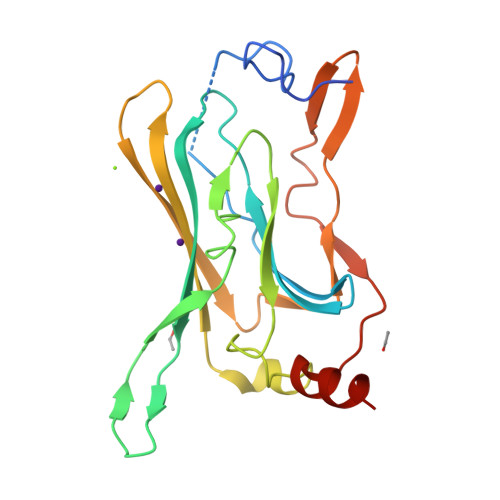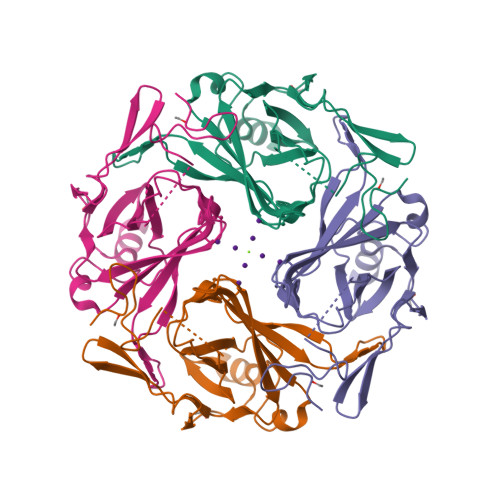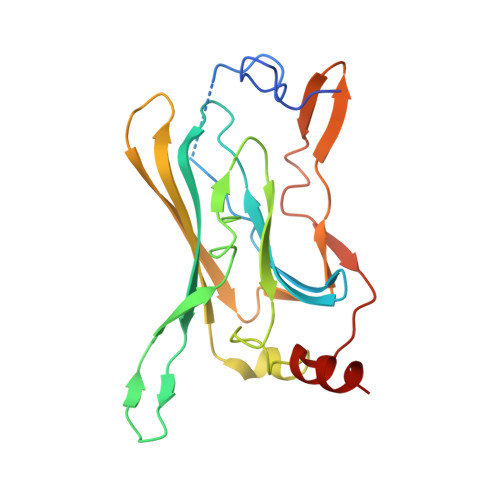Interactions of cations with the cytoplasmic pores of inward rectifier K(+) channels in the closed state
Inanobe, A., Nakagawa, A., Kurachi, Y.(2011) J Biological Chem 286: 41801-41811
- PubMed: 21982822
- DOI: https://doi.org/10.1074/jbc.M111.278531
- Primary Citation of Related Structures:
3AT8, 3AT9, 3ATA, 3ATB, 3ATD, 3ATE, 3ATF - PubMed Abstract:
Ion channels gate at membrane-embedded domains by changing their conformation along the ion conduction pathway. Inward rectifier K(+) (Kir) channels possess a unique extramembrane cytoplasmic domain that extends this pathway. However, the relevance and contribution of this domain to ion permeation remain unclear. By qualitative x-ray crystallographic analysis, we found that the pore in the cytoplasmic domain of Kir3.2 binds cations in a valency-dependent manner and does not allow the displacement of Mg(2+) by monovalent cations or spermine. Electrophysiological analyses revealed that the cytoplasmic pore of Kir3.2 selectively binds positively charged molecules and has a higher affinity for Mg(2+) when it has a low probability of being open. The selective blocking of chemical modification of the side chain of pore-facing residues by Mg(2+) indicates that the mode of binding of Mg(2+) is likely to be similar to that observed in the crystal structure. These results indicate that the Kir3.2 crystal structure has a closed conformation with a negative electrostatic field potential at the cytoplasmic pore, the potential of which may be controlled by conformational changes in the cytoplasmic domain to regulate ion diffusion along the pore.
Organizational Affiliation:
Department of Pharmacology, Graduate School of Medicine, Osaka University, Osaka 565-0871, Japan; Center for Advanced Medical Engineering and Informatics, Osaka University, Osaka 565-0871, Japan. Electronic address: inanobe@pharma2.med.osaka-u.ac.jp.



















